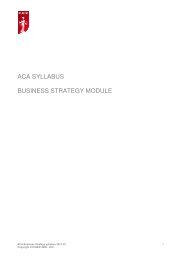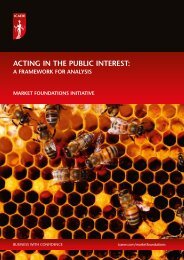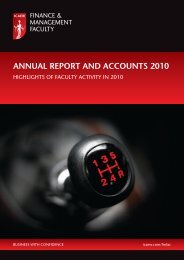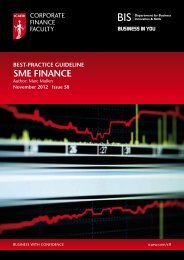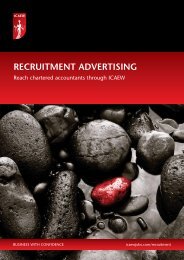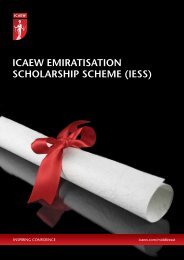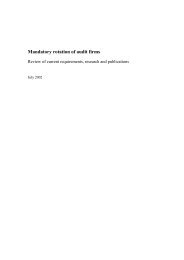Auditor independence and non-audit services - ICAEW
Auditor independence and non-audit services - ICAEW
Auditor independence and non-audit services - ICAEW
You also want an ePaper? Increase the reach of your titles
YUMPU automatically turns print PDFs into web optimized ePapers that Google loves.
CHAPTER 8ASSOCIATIONS BETWEEN JOINT PROVISION, PRICING AND AUDITTENURE8.1 IntroductionAs business practices became more complex, it was natural for companies to seekadvice <strong>and</strong> professional <strong>services</strong> from their <strong>audit</strong>or. The reason why both <strong>audit</strong>or <strong>and</strong>client company are happy to have <strong>services</strong> provided that complement the <strong>audit</strong> is dueto the existence of economies of scope. If production efficiencies lead to cost savingsthat are retained in whole or in part by the <strong>audit</strong>or (i.e., not wholly passed on to theclient company), then economic rents accrue to the <strong>audit</strong>or, increasing the economicbasedthreats to <strong>independence</strong> through increased bonding. For this reason the pricingeffects of joint <strong>audit</strong> <strong>and</strong> NAS provision have been studied as an indirect means ofassessing <strong>audit</strong>or <strong>independence</strong>.The nature of economies of scope is discussed in section 8.2. Attempts at modellingthe pricing consequences of knowledge spillovers are briefly discussed in section 8.3.The available evidence regarding such economies is presented in sections 8.4 <strong>and</strong> 8.5(the former reviews the many studies using archival (i.e., publicly available) data,while the latter reviews those few studies using proprietary (i.e. private) data. Section8.6 looks at evidence from initial bid pricing. Section 8.7 presents the evidence fromstudies that focus on <strong>audit</strong>or tenure <strong>and</strong> <strong>audit</strong>or change as proxies for the level ofeconomic bonding. A final section summarises <strong>and</strong> concludes.8.2 Economies of scopeEconomies of scope refer to cost savings that arise when the same person or firmprovides two types of service (i.e., joint production). These savings are also referredto as externalities or spillovers. Economies of scope are of two types: ‘knowledgespillovers’ <strong>and</strong> ‘contractual economies of scope’ (Arruñada, 1999a, pp.75-77).Knowledge spillovers occur when two different <strong>services</strong> require elements of the sameinformation set <strong>and</strong>/or the same professional qualifications. Contractual economies ofscope arise because the provision of professional <strong>services</strong> has associated with it hightransactions costs due to the informational asymmetry existing between supplier <strong>and</strong>client. Joint provision reduces the cost of searching for a credible consultant <strong>and</strong> thecost of ensuring contractual performance.Arruñada argues that the relative significance of contractual economies of scope isgrowing for the large <strong>audit</strong> firms (now more commonly known as professional serviceorganisations or multi-disciplinary partnerships). It is noted that different divisions oreven companies commonly provide the different <strong>services</strong>. Knowledge spillovers areseen to be increasingly <strong>non</strong>-client-specific.8.3 Modelling knowledge spilloversSimunic (1984) provides a model of knowledge spillovers (or cost interdependencies)that relates to client-specific spillovers. He notes that the form of the knowledgespillover can be complex:• knowledge may flow from <strong>audit</strong>ing to NAS, from NAS to <strong>audit</strong>ing or inboth directions;• the fixed cost, variable cost or both may be affected; <strong>and</strong>• the knowledge spillover may be client-specific or general.46




